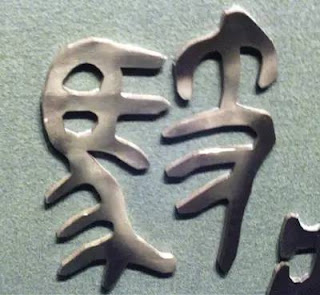Today we are going to check another Pictogram character - 鸟, whose traditional version is 鳥.
Once you know the meaning of 鸟 | 鳥, you will like its traditional version 鳥 more. 鳥 is a closer drawing of the object it represents.
Once you know the meaning of 鸟 | 鳥, you will like its traditional version 鳥 more. 鳥 is a closer drawing of the object it represents.
Let us examine its revolution history as shown below : (image taken from http://vividict.com)
 |
| evolution history of 鸟 | 鳥 |
Its Oracle script
 is a drawing more than a proper character. I assume you would already know what
is a drawing more than a proper character. I assume you would already know what  , or
, or  or
or  refers to?
refers to?Starting from Oracle script
 , to Bronze script
, to Bronze script , then Seal script
, then Seal script , till its current modern form, 鳥 inherits most of its ancient scripts, while 鸟 is simplified too much.
, till its current modern form, 鳥 inherits most of its ancient scripts, while 鸟 is simplified too much.
鸟 | 鳥 is another example which explains why we appreciate our traditional version 鳥 more than its simplified counter party - 鸟.
 |
| 鸟 | 鳥 |
that is all for 鸟 | 鳥, now let us enjoy a Chinese calligraphy with 鸟 | 鳥 inside:
 |
| 海阔凭鱼跃;天高任鸟飞。 |


























 , comparing to
, comparing to 

